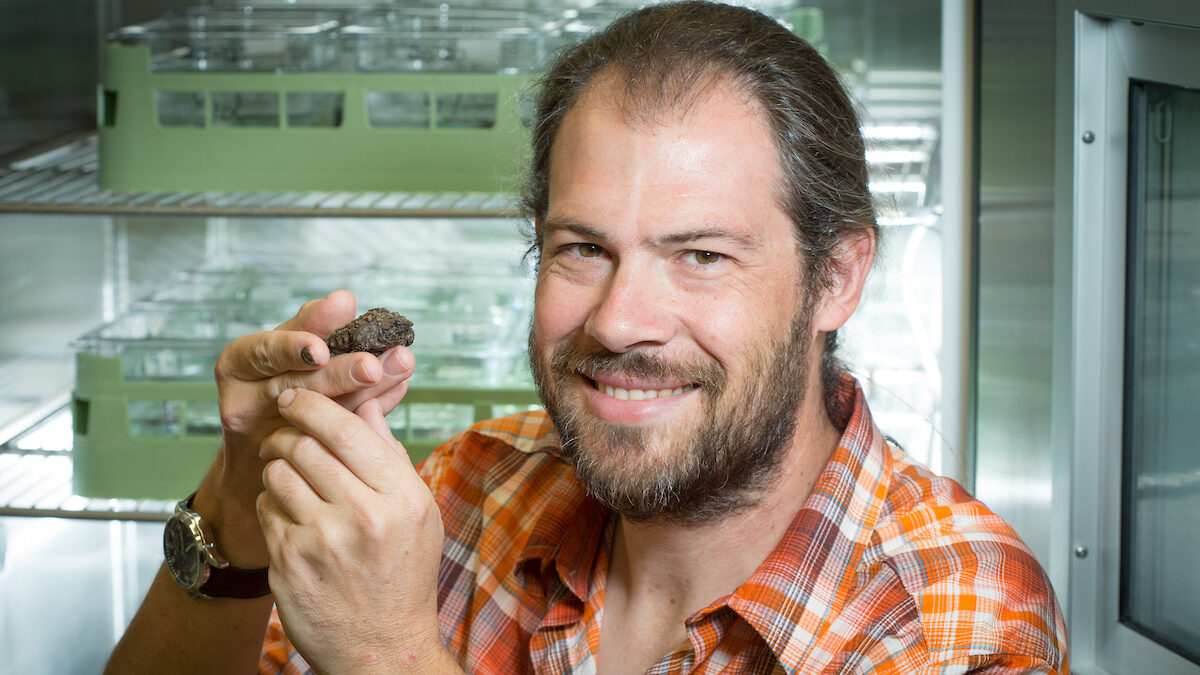In the freshwaters of Belize, you may spot the Central American River Turtle known as the Hicatee.
While conducting a study of movement and home ranges, Drs. Day Ligon and Donald McKnight, along with colleagues Denise Thompson and Jaren Serano, noticed how Hicatee turtles move in groups through the water.
This was very surprising, as turtles are generally believed to be nonsocial.
Upon making this discovery, Ligon and McKnight changed course and set their sights on learning more about this very strange behavior of the Hicatee.
Coming out of their shells
This newly observed behavior of the Hicatees had Ligon and McKnight scratching their heads.
“We were tracking their positions up and down a river, and we started noticing they were next to each other,” McKnight said. “There were a few noteworthy times where we were behind a group of turtles while tracking them, and the whole group would seem to move downriver together.
“In other cases, one turtle would move several kilometers up or down the river and stop right beside one of the other individuals we were tracking. So, we kept seeing all these things that were suggestive of social behavior.”
The team was able to cross off other possible explanations, too.
“There weren’t any big logs in the river or vegetation in the middle for them to be in; it was just a very plain, muddy bottom,” McKnight said. “We did things like plant surveys, scuba diving surveys and side-scan sonar to confirm this was just an open area with no structure that could be attracting turtles and driving this behavior.”
This behavior is considered strange because the Hicatees are some of the only species of turtle to be witnessed exhibiting social behavior.
“Giant Amazon River turtles have been described as having some interesting social tendencies,” Ligon said. “But outside of that group, the evidence really falls off.”
Discoveries for conservation
This discovery means much for the critically endangered Hicatee.
As one of the 25 most endangered species in the world, any discovery of the species can strengthen their conservation.
According to McKnight, the Hicatee is declining because of overharvesting for human consumption. There are reports of poachers catching dozens of these turtles in a single night. This was surprising since they’re so uncommon.
“However, it seems like the poachers know how to target these clusters. The turtles are making a social cluster and then poachers can drop their nets right on top of them, catching a lot of turtles simultaneously. This new behavior makes it easy for the poachers, and it may be really detrimental to the Hicatees from a conservation standpoint.”
Despite this, there is still hope.
“Understanding the social aspect of a species like the Hicatee is really important for making long-term conservation plans,” McKnight said. “We can incorporate this knowledge into conservation management plans and future research objectives.”
Sharing their research
Ligon is a biology professor at Missouri State University. McKnight wears two hats — he is an adjunct faculty at MSU and serves full time as research director at the Savanna Field Station in central Belize. Their history working together goes back a decade to when McKnight was a graduate student in Ligon’s lab.
Ligon, McKnight and their colleagues completed the article titled, “They really do move in herds: evidence of group living in an aquatic turtle.” It has been published in September’s issue of the journal Animal Behaviour, with McKnight as the lead author.

